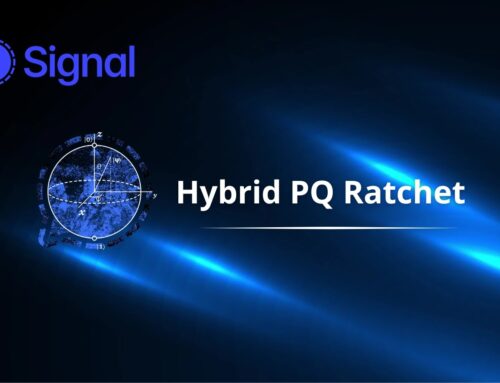
Scattered LAPSUS$ Hunters Announced Salesforce Breach List On New Onion Site
The digital landscape is a constant battlefield, and a menacing new front has just opened. A group identifying itself as Scattered LAPSUS$ Hunters has announced the launch of a dark web data leak site, claiming to possess a staggering one billion records from Salesforce customers. This collective is not merely exfiltrating data; they are orchestrating a widespread blackmail campaign, demanding ransom by October 10, 2025, or they will publish sensitive customer data and technical specifics. This development highlights the persistent and evolving threat posed by sophisticated cybercrime groups and underscores the critical need for robust cybersecurity defenses and immediate incident response planning.
Understanding the Scattered LAPSUS$ Hunters Threat
The Scattered LAPSUS$ Hunters collective, a name echoing the notorious LAPSUS$ group known for high-profile breaches, has emerged with a significant and alarming claim. Their new onion site on the dark web serves as a platform to publicize their alleged haul of nearly one billion Salesforce customer records. This isn’t just about data theft; it’s a carefully calculated extortion scheme. By setting a hard deadline of October 10, 2025, they aim to maximize pressure on victims to comply with their ransom demands. The threat to release both sensitive data and technical details could have devastating consequences for affected Salesforce customers, including reputational damage, regulatory fines, and competitive disadvantages.
The Salesforce Breach Claim: Implications for Cloud Security
While Salesforce has yet to officially confirm or deny the extent of the alleged breach, the mere claim by a group with such a threatening modus operandi sends ripples through the cybersecurity community. Salesforce, as a leading cloud-based CRM provider, handles vast amounts of sensitive customer information. A breach of this magnitude would highlight critical vulnerabilities within the cloud ecosystem, potentially impacting millions of businesses relying on their services. The implications extend beyond just data exposure; it raises questions about supply chain security, third-party vendor risk, and the effectiveness of current data protection mechanisms for cloud environments.
The Blackmail Campaign and Ransom Deadline
The core of the Scattered LAPSUS$ Hunters’ operation is a coordinated blackmail campaign. By publicly announcing their alleged access to Salesforce customer data and setting a definitive ransom deadline, they are employing psychological warfare. This strategy aims to provoke panic and encourage rapid payments to avoid the public exposure of sensitive information. The threat to publish “sensitive data and technical details” suggests a deep penetration that could reveal not only customer records but also potentially system configurations, platform weaknesses, or internal operational information. Organizations that find themselves targeted by such threats must prioritize an immediate and forensic investigation to assess the validity of the claims and the extent of any potential compromise.
Remediation Actions and Proactive Defense
In light of this evolving threat, organizations utilizing Salesforce or similar cloud services must take immediate and proactive measures to bolster their defenses and prepare for potential incidents. While specific details of the alleged breach are still emerging, general best practices for cybersecurity hygiene and incident response are paramount.
- Multi-Factor Authentication (MFA): Ensure MFA is enforced for all Salesforce users, particularly administrators. This significantly reduces the risk of unauthorized access even if credentials are compromised.
- Regular Security Audits: Conduct frequent security audits of Salesforce configurations, user permissions, and access controls. Limit access based on the principle of least privilege.
- Monitor for Suspicious Activity: Implement robust logging and monitoring within Salesforce to detect unusual login patterns, data access, or configuration changes. Integrate Salesforce event monitoring with a Security Information and Event Management (SIEM) system.
- Data Encryption: Ensure that sensitive data stored within Salesforce is encrypted both at rest and in transit.
- Vendor Security Assessment: Regularly review Salesforce’s security posture and ensure their compliance with relevant industry standards and certifications. Maintain clear communication channels with Salesforce regarding any security concerns.
- Incident Response Plan (IRP): Develop and regularly test a comprehensive IRP specifically tailored for cloud environment breaches. This plan should include communication protocols, forensic investigation steps, and data recovery strategies.
- Employee Training: Educate employees on phishing awareness, social engineering tactics, and the importance of strong, unique passwords.
The Peril of the Dark Web and Data Leak Sites
The establishment of a new onion site by Scattered LAPSUS$ Hunters underscores a growing trend among cybercriminal groups: utilizing the dark web as a platform for extortion and data dissemination. These sites serve as a grim marketplace for stolen data and a public display of power for threat actors. Organizations must enhance their threat intelligence capabilities to monitor these dark web activities for mentions of their brand, intellectual property, or compromised data. Proactive dark web monitoring can provide early warnings of potential breaches or data leaks, allowing for faster response times and mitigation efforts.
Conclusion
The claims by Scattered LAPSUS$ Hunters regarding a massive Salesforce customer data breach represent a significant alarm bell for businesses worldwide. This incident, while still unfolding, highlights the sophisticated nature of modern cyber threats and the critical importance of robust cybersecurity strategies. Organizations must move beyond reactive measures and embrace proactive defense, continuous monitoring, and well-rehearsed incident response plans. The digital frontier demands constant vigilance, and preparing for the worst is the best way to safeguard sensitive data and maintain trust in an increasingly interconnected world.





